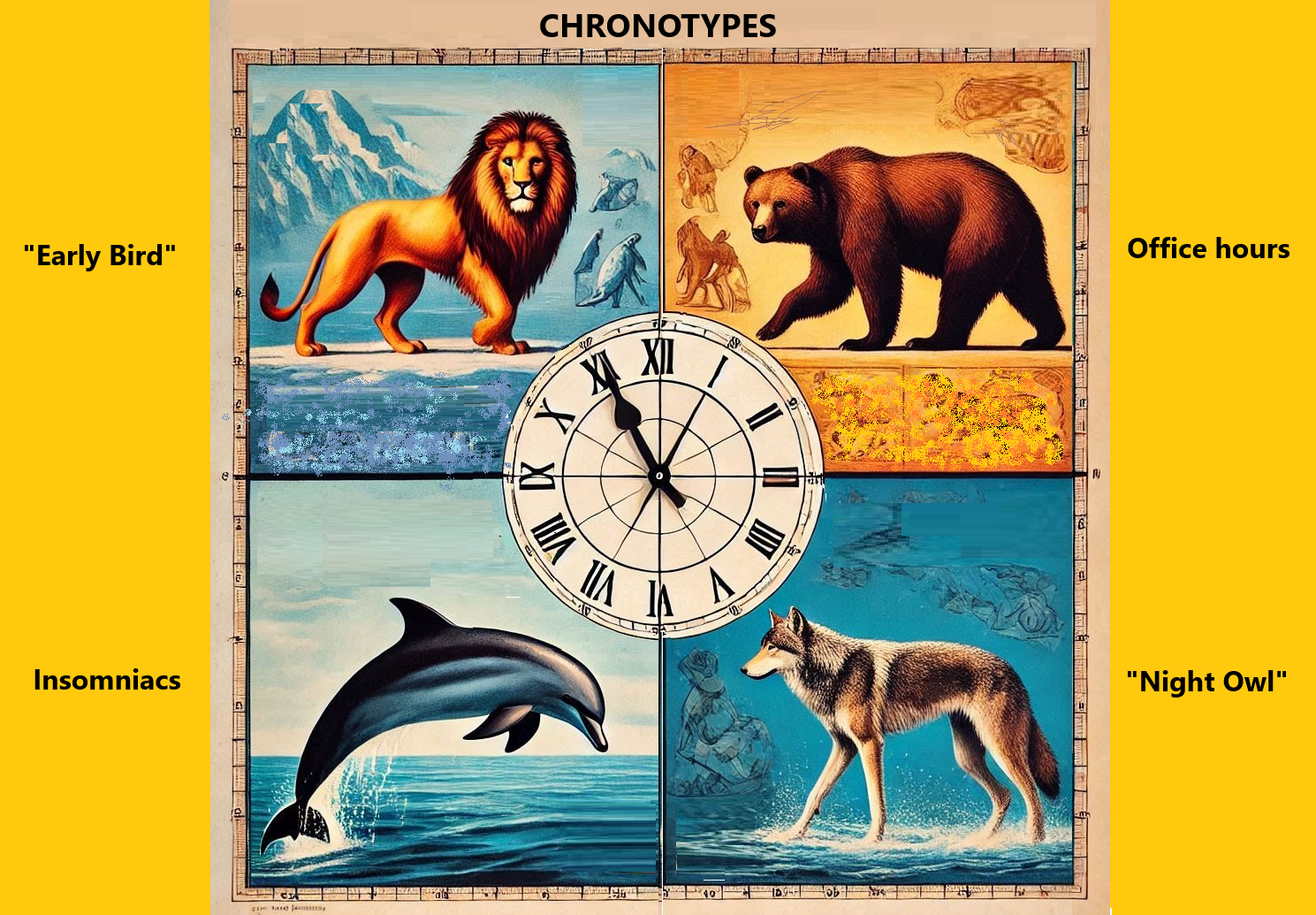
Chronotypes, Circadian Rhythm and Flexible Working
Have you heard about “Chronoworking”?
"Chronoworking" refers to the practice of structuring work schedules around your natural circadian rhythm.
This means you work during the times of day when your body is naturally most alert and productive, aligning your work hours with your internal biological clock to maximize efficiency and well-being.
Essentially, it's about tailoring work schedules to fit each person's peak energy periods throughout the day based on their circadian rhythm.
What is Circadian Rhythm?
This is the body's natural 24-hour cycle. It regulates various body functions like sleep, wakefulness, hormone release, and energy levels, and is largely influenced by light exposure.
What is a Chronotype?
Each person has a "chronotype" which describes their natural tendency to be most alert at certain times of day, like being a "morning person" (early bird) or a "night owl".
Four kinds of chronotypes were described by Dr Michael Breus based on the sleep-wake patterns observed in animals:
🐻 Bear
These people tend to follow the sun, sleep after sun sets and wake when the sun has risen. Traditional office hours work well for them. Apparently 55% of people are bears.⌛ Most productive: 10am – 2pm
🦁 Lion
Also known as “early bird” chronotype. They sleep earlier than bears and rise earlier in the morning. Early risers, most productive in the morning, may have trouble evening social schedules. 15% of people.⌛ Most productive: 8am – 12pm
🐺 Wolf
Similar to the “night owl”, estimated to be 15% of people. Wolves stay up after dark and sleep until after the sun rises. Most productive in the afternoon, wake up late and go to bed late.⌛ Most productive: · 5pm -12am
🐬 Dolphin
No particular sleep schedule. Most applicable to insomniacs as it is based on dolphins who can stay alert even whilst asleep. 10% of the people.⌛ Most productive: reports vary – some say 3pm – 7pm, others say the productivity window is 10am – 2pm.
Understanding your chronotype can help you find you optimal times for sleeping and working, improving the quality of both your work and sleep.
Benefits of Chronoworking
- Increased productivity and focus
- Improved job satisfaction and employee well-being
- Reduced stress and burnout
Yet another example of why flexible working is so important.
Which chronotype are you?
Blog article by: Zahida Posted: March 2025